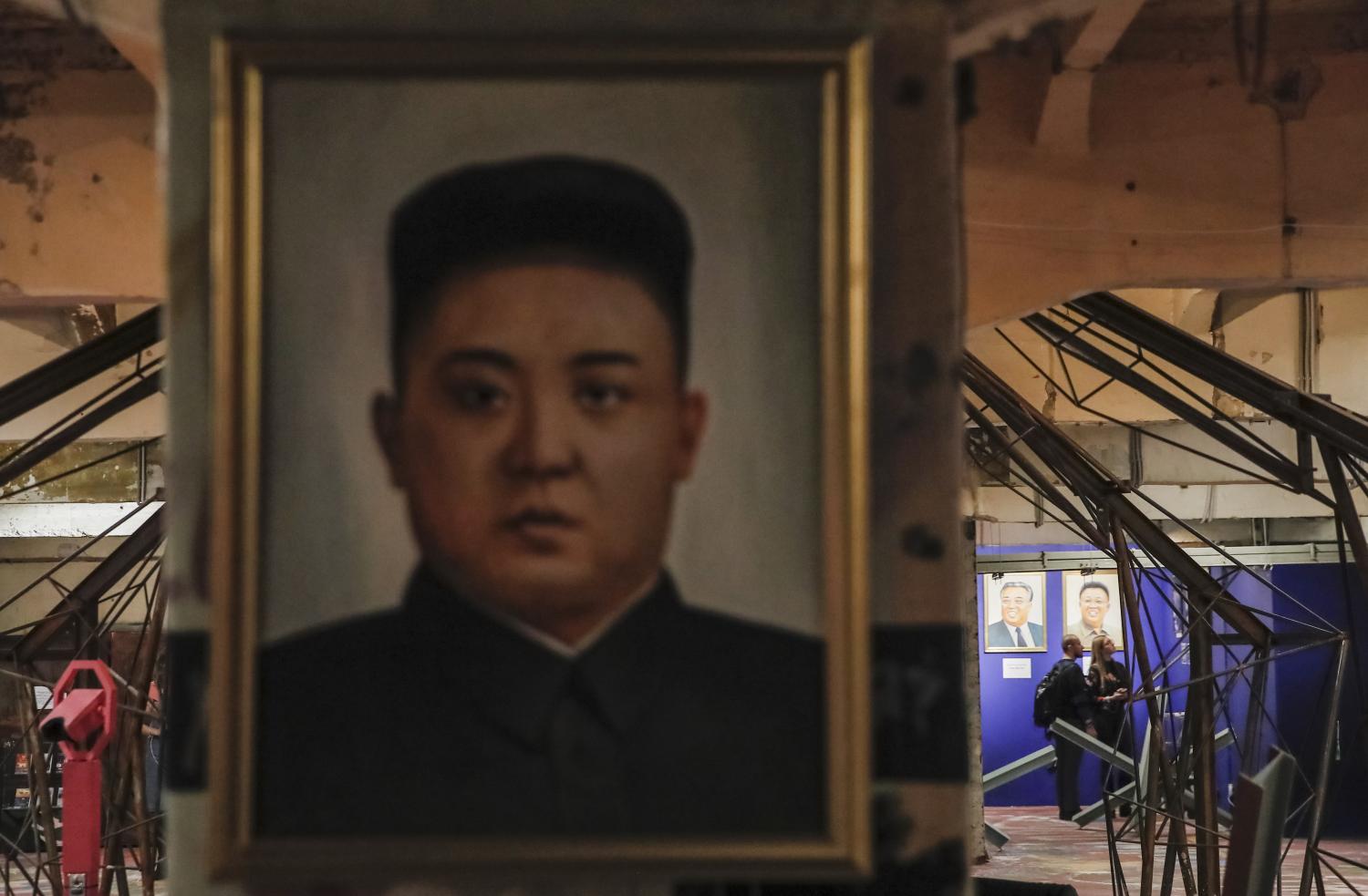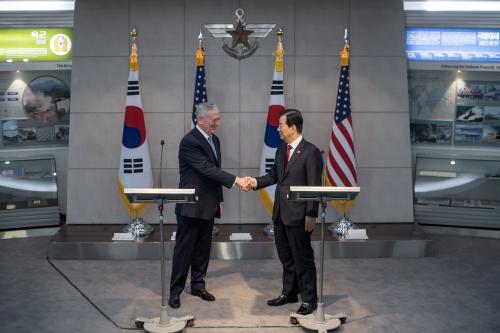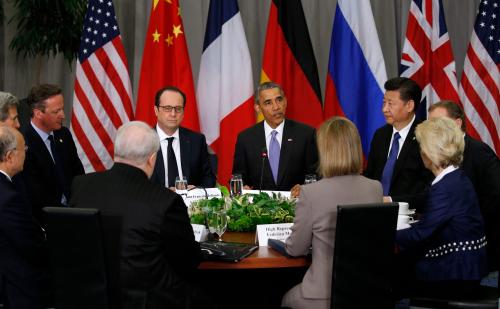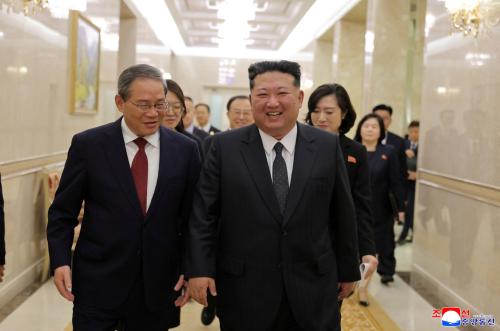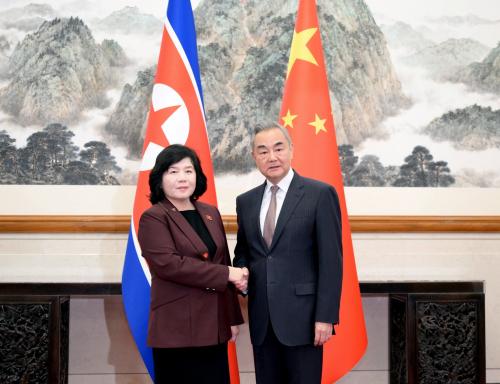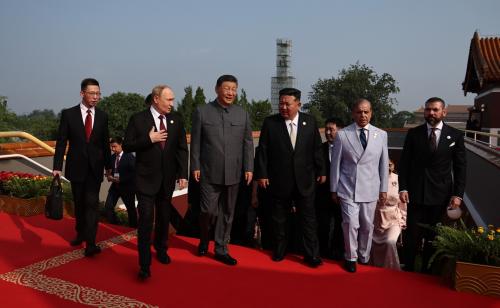This paper was presented at the 6th Brookings-Korea Research Institute for National Strategy (KRINS) joint conference, “Strategy of the Kim Regime and the ROK-U.S. Response in the Era of North Korea’s Nuclear Upgrades,” in Seoul on January 17, 2018.
We may be moving closer to a military conflict on the Korean Peninsula – a conflict that could have a nuclear dimension. As 2018 begins, the signs are ominous. Kim Jong Un’s New Year’s speech marked the opening of a North Korean campaign to gain acceptance for its status as a nuclear weapons power. Seoul’s quick and positive response to his overtures stood in sharp contrast to Washington’s strong negative reaction. The U.S. continues to demand North Korean denuclearization, and has declared a nuclear-armed North Korea “intolerable” and “unacceptable.” On its part, Pyongyang has vowed never to give up its nuclear weapons and has called for the United States to recognize the “reality” of a nuclear-armed DPRK.
The U.S. and the DPRK could be on a collision course. Washington is hinting that military action may be needed to prevent North Korea’s acquisition of the capability to threaten the United States with nuclear weapons. The DPRK may believe the U.S. is bluffing, and has promised to strengthen further its nuclear deterrent and its ability to attack the United States.
Washington’s flirtation with a “military option” is fueled by concern that North Korea will soon be able to threaten the U.S. homeland with nuclear weapons, and by the belief that the classic tools of U.S. security strategy, including deterrence, are of no use against an “irrational” North Korea.
With tensions rising and the possibility of confrontation looming, these and other assumptions need to be reexamined and tested to avoid miscalculation. As the North Korea crisis moves to a new and dangerous level, the time is ripe for a serious reassessment of the military option, its dangers, and its potential to undermine America’s Northeast Asian alliances. Indeed, the moment could not be better for a serious review of all three major remaining options and their consequences, and for frank consultations with allies and partners, as well as straight talk with the American people and allies about U.S. intentions. This review must include answering the most important question of all: How does this end?
The Brookings Institution is committed to quality, independence, and impact.
We are supported by a diverse array of funders. In line with our values and policies, each Brookings publication represents the sole views of its author(s).

